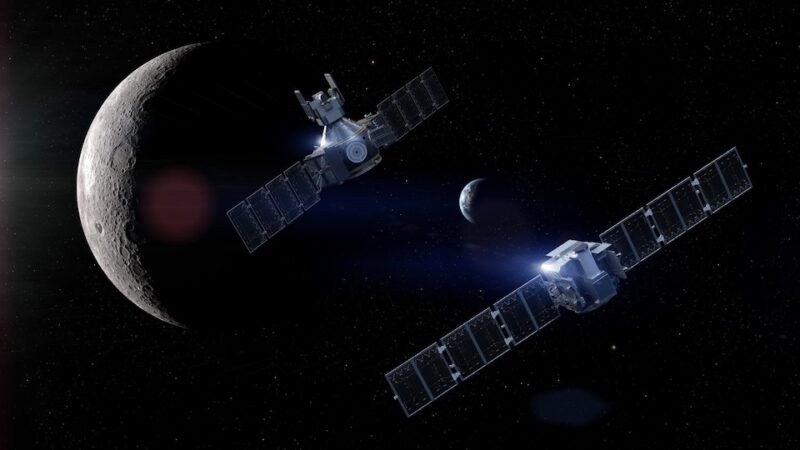Latest News

A rendering of Quantum Space Scout and Ranger vehicle in GEO. Photo: Quantum Space
Recently formed startup Quantum Space plans to open access to and understanding of Geostationary Orbit (GEO) and Cislunar orbit with its upcoming missions. Quantum Space CSO Phil Bracken spoke to Via Satellite during the Small Satelite conference about the company’s progress since closing its Series A round last year.
Describing GEO as a “critical resource,” Bracken said the company is developing a fleet of in-orbit logistics and payload hosting vehicles called “Rangers,” and smaller multi-purpose vehicles called “Scouts” to provide communications and data collection. Both spacecraft systems are designed to work together to form QuantumNet, an edge computing network to support communications in GEO.
“Quantum has been looking at how to bring better communications to GEO, in between GEO and the Moon. We’ve been looking at how to make logistics more affordable for transportation for customers. On the data side, we’re looking at how to protect and provide insights on all of the different activities of customers in that area,” Bracken says.
The Ranger vehicle is designed to transport rideshare payloads, from cubesats to larger OTVs, up to 1500 kg to GEO and 2500 kg to cislunar orbits. The first Ranger OTV mission launch is set for 2025.
But Quantum Space’s first mission is set for early next year; it will be launching demonstration Scouts to Low-Earth Orbit (LEO) to test its sensing technology.
In order to move faster on its manufacturing, Quantum Space is working on partnerships with for turnkey integration and spacecraft build facilities near its headquarters in the Rockville, Maryland/Washington, D.C. area, instead of building its own manufacturing facility.
Quantum Space was founded by Kam Ghaffarian, who also co-founded Axiom Space, Intuitive Machines, and X-energy.
The U.S. government and the national security market is a large target customer for Quantum Space. Bracken sees a renewed interest in the security of GEO.
“GEO is such a unique resource and there is interest in using it for refueling stops. It’s interesting to customers for sensing missions, and very interesting to the U.S. government,” Bracken says. “Aggressors could use the Moon to come back to GEO. They can do some unique things where they “hide out” there and swing back to GEO. GEO continues to be a focus.”
The company is working to build an infrastructure for GEO to capitalize on growing interest in the orbit, both government and commercial. “Here at Smallsat, we’re hearing more and more interest in coming to GEO — and it’s not just it’s not just for government missions, it’s for [commercial] uses.”
Get the latest Via Satellite news!
Subscribe Now